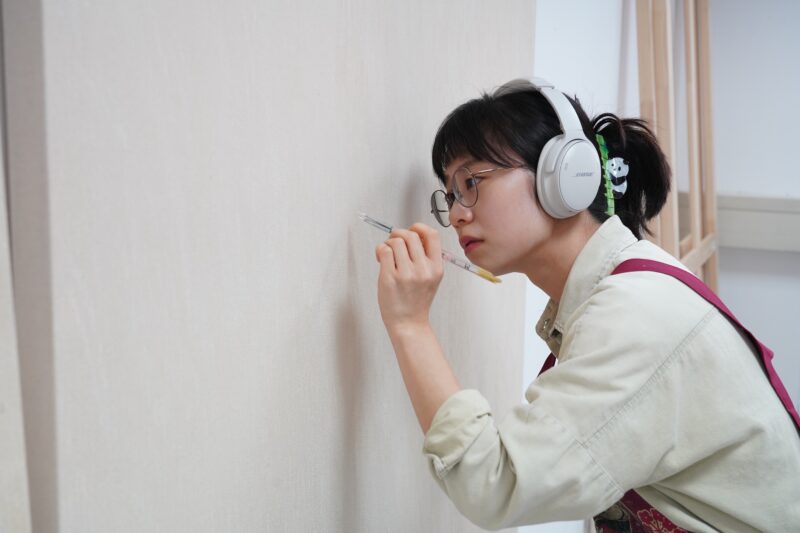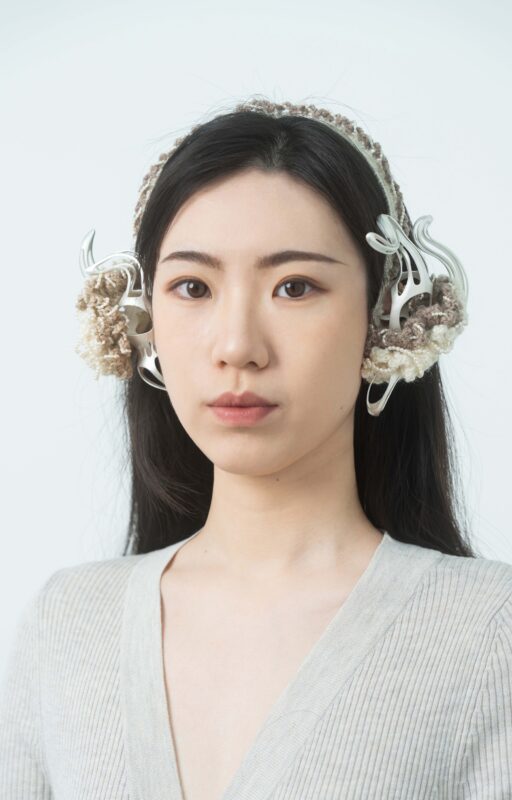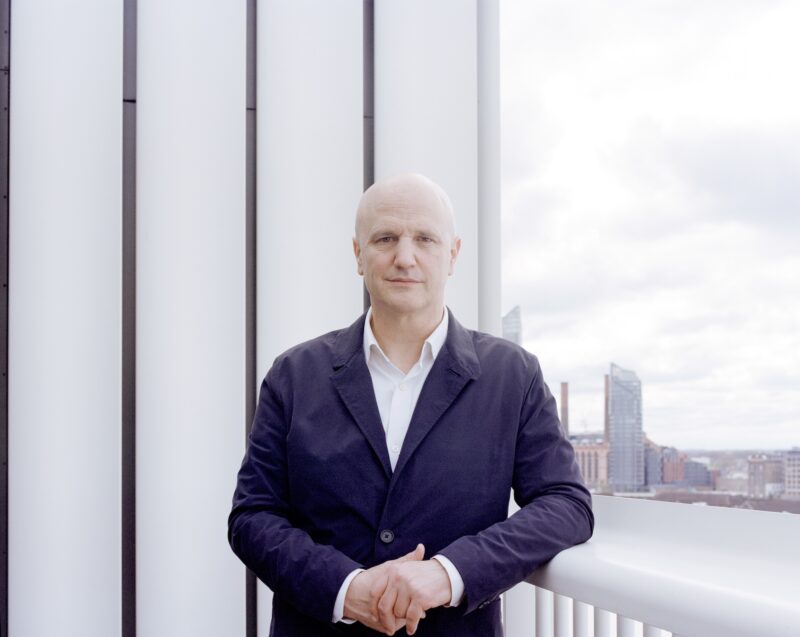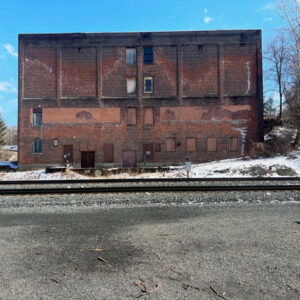British Caribbean artist Hettie Inniss makes her solo debut at GRIMM Gallery, showcasing a series of paintings that delve into the complexities of memory and perception. Inniss graduated with an MFA from the Royal College of Art in 2023 and has since steadily built a name for herself within the London art scene. Rememories from the Floating World marks a significant milestone in her career, bringing her distinctive approach to painting into the heart of GRIMM Gallery’s London space.
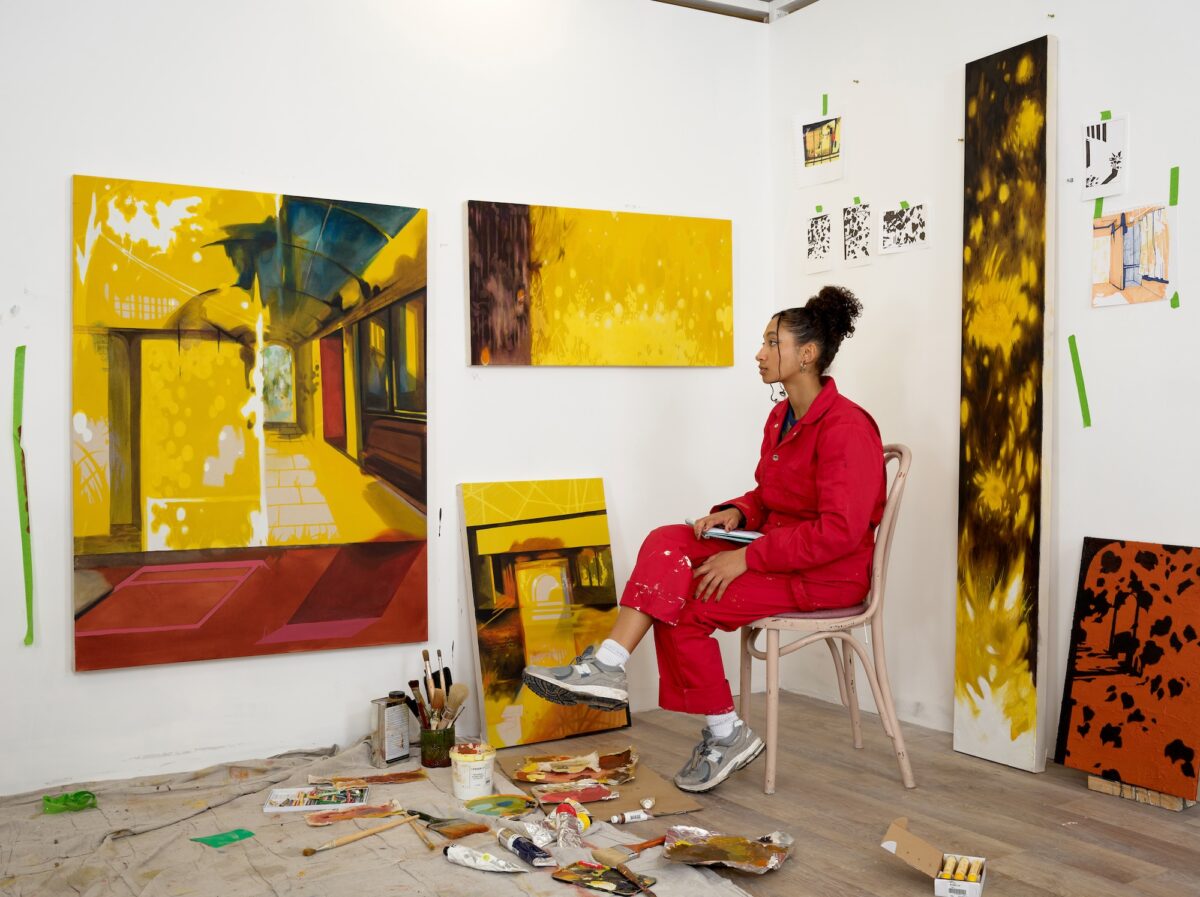
Inniss’ work explores the intersection of past and present by utilising memory. By recalling the sights, sounds, and thoughts associated with specific scents, Inniss highlights the fallibility and selective nature of visual memory. Her compositions, often architectural, create a dialogue between abstraction and figuration.
In this profound exploration of personal and collective memory, Inniss employs the layering of light and dark tones to produce images that are reminiscent of photographic negatives. The resulting works offer a sense of familiarity while simultaneously interrogating the unknown, making this exhibition a vivid and thought-provoking experience.
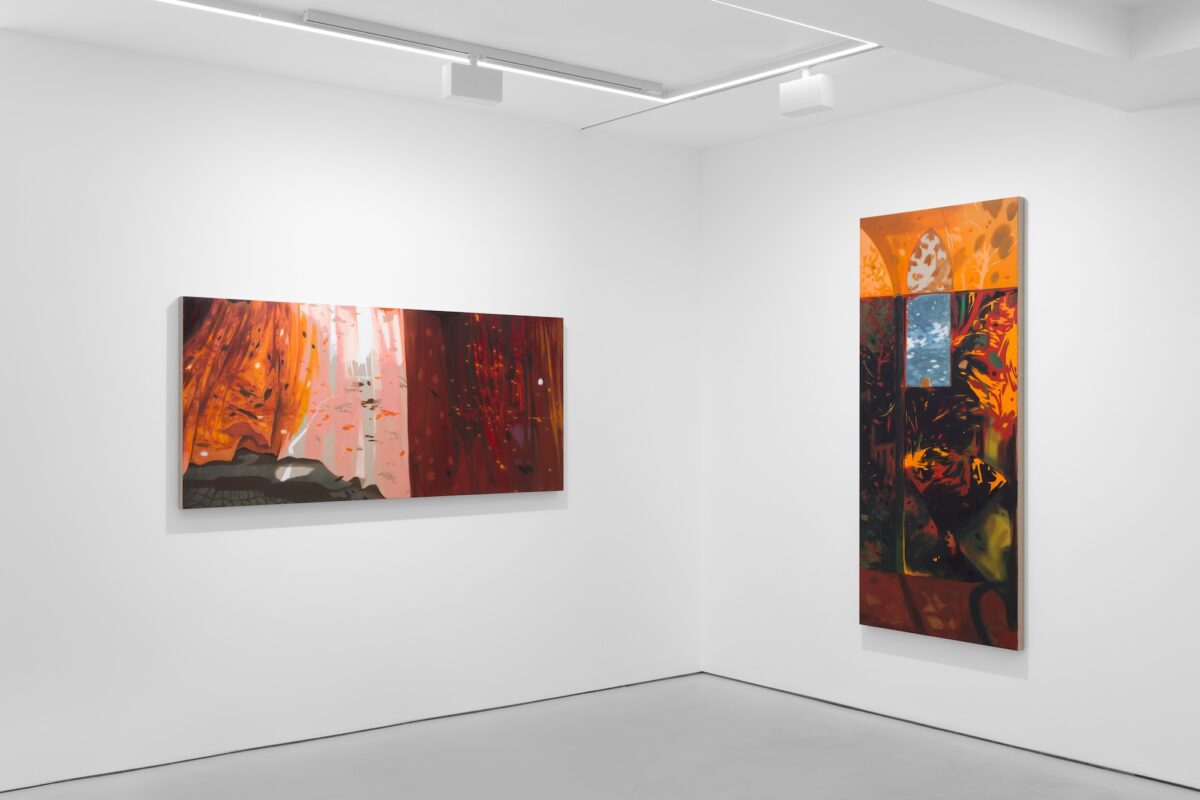
Chard Adio: So it’s your first-ever solo show! And I see this as something that has been a long time coming. Because since graduating from the RCA, you’ve made a real splash in the London art scene. You’ve done a range of group shows, along with some residencies, and to top that off you are now represented by GRIMM Gallery! With all that has transpired in this short period, how does this all feel?
Hettie Inniss: I see right now as a surreal experience. All these different opportunities have come together and led me to this show. I think the only pressure I’ve felt going into this was pressure from myself—I’m quite an anxious person so I was thinking about 50 different things during the lead up to this solo. I saw everything as this learning curve—an enlightening experience that will inform future shows. In terms of being part of GRIMM Gallery, it has been an amazing opportunity. To be part of a gallery roster where every artist is super talented is incredible because I feel this urge as an artist to evolve, and step up my work with each opportunity. I see GRIMM as this place that has provided me with this scope to explore new ideas. Things here are reminiscent of the RCA, because there’s this talented community, and everyone is just pushing each other.
CA: And what’s the journey been like? How did we get to the artist we know today?
HI: So before my MFA, I did my BA in Art & Design at Leeds University. I did that particular course because I wanted to do something that combined the two disciplines. Between A-Levels and university, I worked at a kitchen design company. So going into my BA, I was mostly leaning towards the design route. But as I progressed through my BA, and did my art modules, that switch began. By the end of my BA, I wanted to develop my artistic practice even further. So I thought about an MFA, and I thought, “Why not?” about the RCA. I applied, and secured a place, and was fortunate enough to be awarded the Frank Bowling Scholarship. So here I was studying in the north to all of a sudden being in London.
CA: How was that transition from the north of England to London, because not only did you study there you partially grew up in Liverpool. How did you feel being thrusted into the epicentre of the UK’s art scene? Did you feel intimidated?
HI: “Intimidated” wouldn’t be the word I would use; I think I just became more “aware” of London’s presence in the art world and its status. The north has its cultural hubs and there are so many institutions. But what makes London different is its spectrum of different galleries. From big institutions like the National Gallery to your emerging galleries. When it comes to the emerging galleries, they can exist and thrive here, and as an emerging artist coming out of art school you need access and opportunities to show your work.
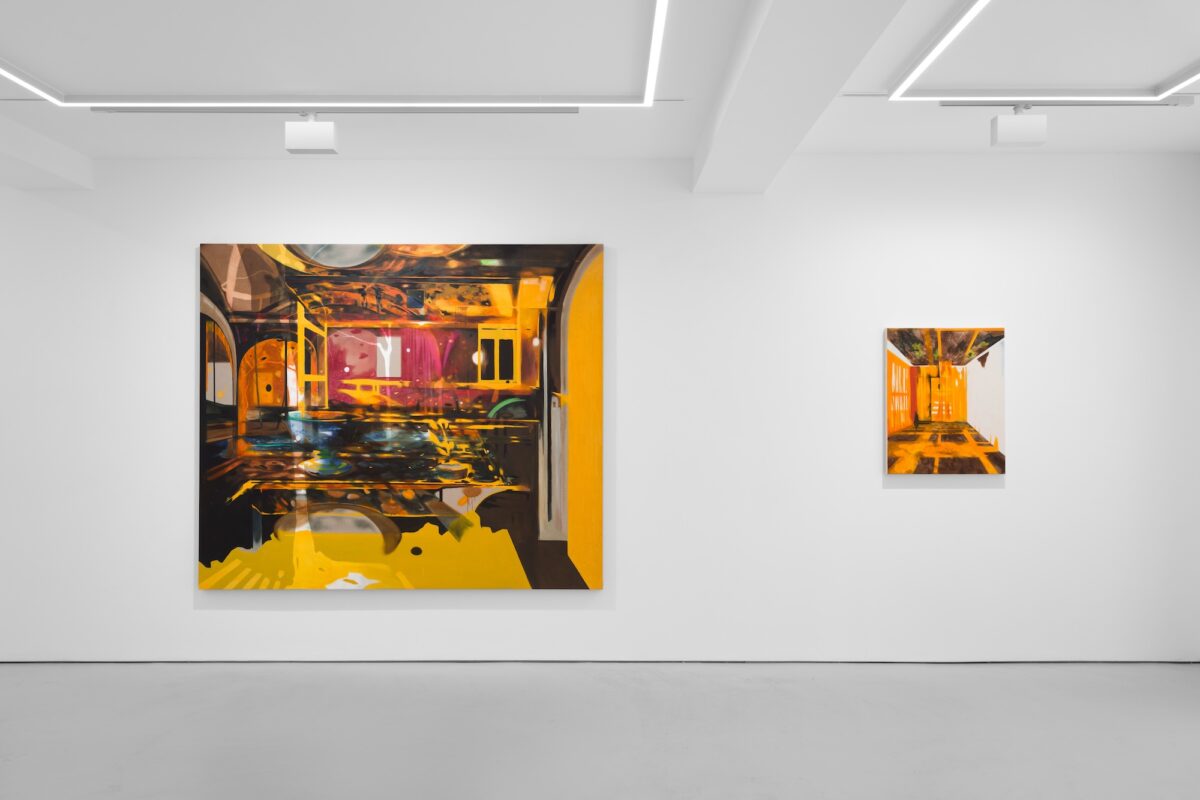
CA: And if we come back to the present, and look at your current practice, how best would you describe it, and what does it me to you personally?
HI: I would describe my practice as me trying to learn and unlearn through the process of making. Before my MFA, I saw an element of rigidity within the work. I was trying to solve things all the time. I responded to this by stripping things back while I was at the RCA. I focused on creating an expansive practice which moved through and around walls rather than building them up. The main tool I tried and used to achieve this, and is now in my practice, was memory. Memory is fallible and therefore lawless, there is nothing to solve here. Exploring memory through a visual language creates moments of clarity, ambiguity and absence, and lends itself to both abstraction and figuration. The work I make has a semblance to reality but encompasses my cerebral state, and by me melding the two, you as the viewer, enter this realm that has its own physics, dimensions and laws. You’re engaged in these conversations that are happening across different timelines. As a viewer, you’re on this journey where you can be lost, but you can also find yourself again. So when you or others ask me, “What does my practice mean to me?” Well, it’s like a lifeline, it allows me to be unashamedly curious about the world, and how I interpret it. I don’t feel restricted; I don’t feel bound to certain ideals. I just see possibilities and this ever-expansiveness.
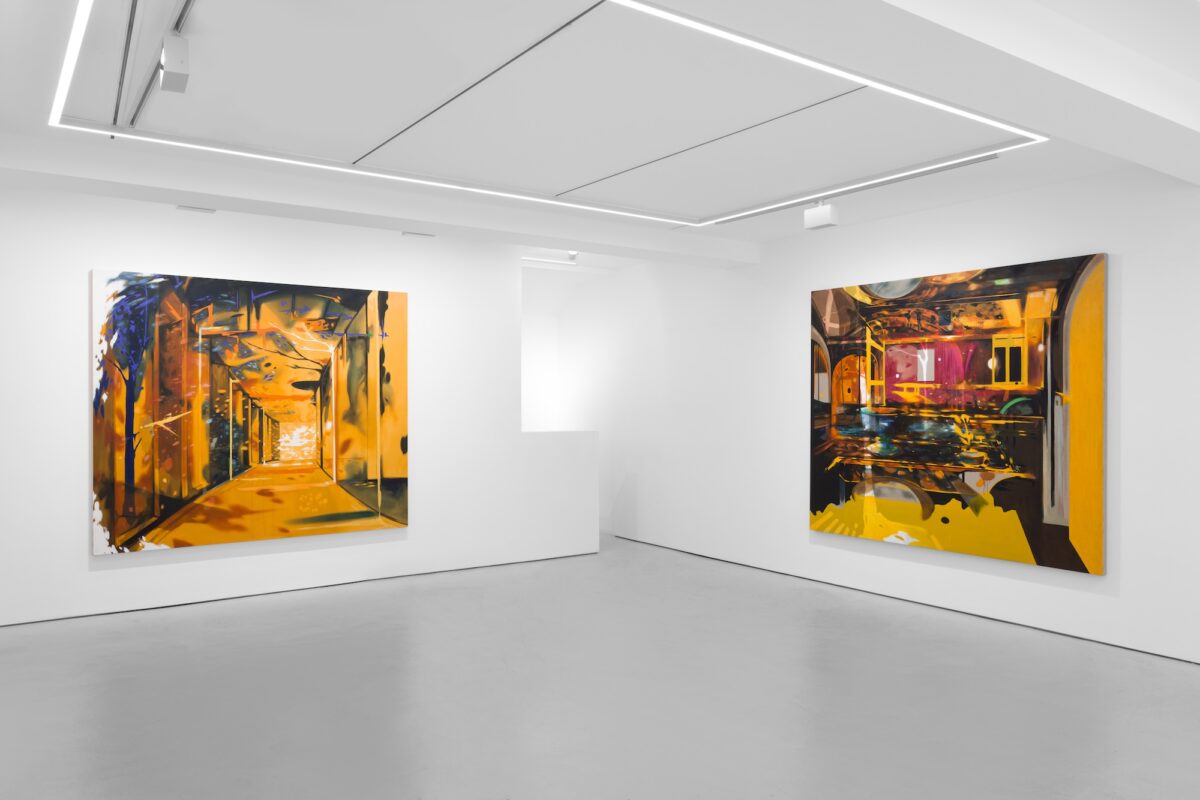
CA: With memory being the core component of your practice and the focus of this show, what was your approach when it came to creating the work? How did you go about doing things?
HI: So during my MFA, I established this methodology of using memory or the concept of it as a tool to further understand myself, and space. For this show, Rememories from the Floating World, I specifically drew on involuntary memories. I was drawing on memories that were out of my control, and this led to some engaging and transformative experiences because everything was driven by my senses. I would hear or smell something, and suddenly, this memory would bleed through. Before the inception of this solo, and for the past couple of years now, I would archive my involuntary memories as paper sketches. So when creating the paintings for this solo, I revisited those sketches and used them as my studies. Translating those studies into paintings was interesting because there wasn’t this desire to represent the memory so accurately, it was more about representing the performance of memory. So for example, when you have a gap in your memory, your brain tries to fill in the missing pieces, and that was reflected in the process. Where there were blanks in the painting, and I would fill things in. This type of process was perfect for me because I didn’t feel restricted.
CA: With involuntary memory being the driving force of this show, did you notice any periods of your life appearing more than others? For example, were most of the memories coming from childhood? Or was it a sporadic pool?
HI: It was definitely the latter. Memories from childhood came through, but I wasn’t grounded to one period—that wasn’t my intention. The memories emerged in a manner in which I needed to be present. One thing you will notice in this show is there are works of different scale, but that isn’t an indication of the emotional weight each memory and subsequent painting bears. For example, the bigger paintings simply allowed me to flesh out the memory and do some world-building. In the show, you have To You, 24 Years From Now” and To You, 24 Years After, these two paintings are the largest pieces of the show, and act as bookends. I started To You, 24 Years From Now in the beginning and To You, 24 Years After at the end. The two paintings bleed into each other with their marks, and facilitate this journey throughout the show. So the memories have come from everywhere; there’s no hierarchy of importance with the paintings, they are all as raw as each other and encompass this philosophy of simply being present.

CA: Speaking of philosophies, let’s delve into one of yours and its Black fluidity. How does this philosophy manifest in your creative process, and ultimately the work?
HI: This philosophy is about examining the ever-expanding self. To me, identity is this amorphous blob—it doesn’t have a shape, and it’s in a state of constant flux. This can be presented in the work, because when you look at it, there are not necessarily figures, there are different manifestations of the figure. The figure can be these void spaces that I put in, or these undulating forms. In other instances, the figures can be the light, or the shadow, and even the textures in the painting. By my control and manipulation of the paint and the materials, the figure can be present but not fixed, and that’s the essence of Black fluidity. I also see this philosophy as something that can allow me to have this discourse about Blackness in the work. Because when we examine Blackness, it always feels redundant making Blackness applicable to just one thing when it isn’t. So it’s a reminder of my agency as an artist and my sense of self.
CA: I also feel a sense of nostalgia when I look at your work, and at times, it feels like I am looking at a photograph. But at the same time, I feel this unfamiliarity. It’s as if the work exists in this ambivalent state of familiarity and alienness.
HI: It’s interesting you say this because I see the work as a window into how we process images. For example, when you look at the sun or a light bulb for too long you can see an image transcribed into your vision. I think photography in particular digital photography is intriguing because with the image being so pristine and sharp we now remember things from a third-person perspective, and I think my practice is indicative of that, it captures this perception of the now, and how it’s processed. I think memory is such a captivating feature of human life because the first time you remember something could be the last time you truly remember it before it’s partially corrupted or edited. So when you say the work has an air of “familiarity” and “alienness”, the work is supposed to be an allegory of that. There’s a communication of what’s not there, as much as what is there; there’s this cosmic horror in the work because you don’t know what it is since it’s playing with the rational side of your mind. But at the same time, you can almost recognise what is there.
CA: Let’s talk about your use of colour since it also plays a role in your work’s storytelling. Across the paintings in this show, we see a mix of vibrant and subdued colours.
HI: I’ve always loved colour, and it’s very cliché of me to say that, but I really do. Since my MFA, I’ve enjoyed pushing the boundaries with what I can do with one colour, and how much I can explore with a colour’s different shades. During my MFA, I was looking for different colours to represent flesh. I was trying to present the body without it being there, and as a result, I arrived at colours such as orange, red and yellow. These colours have this idiosyncrasy of straddling between this space of comfort and discomfort, and as you mentioned earlier, there’s this duality between familiarity and alienness, and I enjoy working in that realm. I’ve spoken to other people, and they say the work can feel creepy sometimes, and I think that’s due to the colour palette because I am playing with these different hues. Also with this show, I snuck in some other colours such as blue and green to evolve the colour palette—I didn’t want things to be so binary compared to previous pieces. But beyond the colours, the materials I use also play a role in that colour play. The intrinsic properties of the canvas create this warmth in the work, and the surface of linen transforms the colours into this moody hue.
CA: And what about your use of light? Because I see this command of it in the work—these different shades allow me to be this voyager and traverse the work.
HI: My use of light and darkness is important to me, and it’s an imperative feature in the practice since it allows me to understand matter—they prove a form of existence. For example, by playing with high contrasts I can hide and expose aspects in the paintings. I can create this back-and-forth and force you to look a bit deeper at the work.
CA: And with all that has been said, what do you want viewers to leave with when they see this show?
HI: With this show, it is less about what I’m saying and more about what I’m doing. I want people to be present in the space, and immerse themselves in these worlds—these pockets of my memory. There isn’t necessarily a didactic attached to the work—viewers can come to their own conclusions. But what I want viewers to consider is the beauty of the unknown and the ambiguous, and how I have used memory as a tool to understand the self and the world around us.
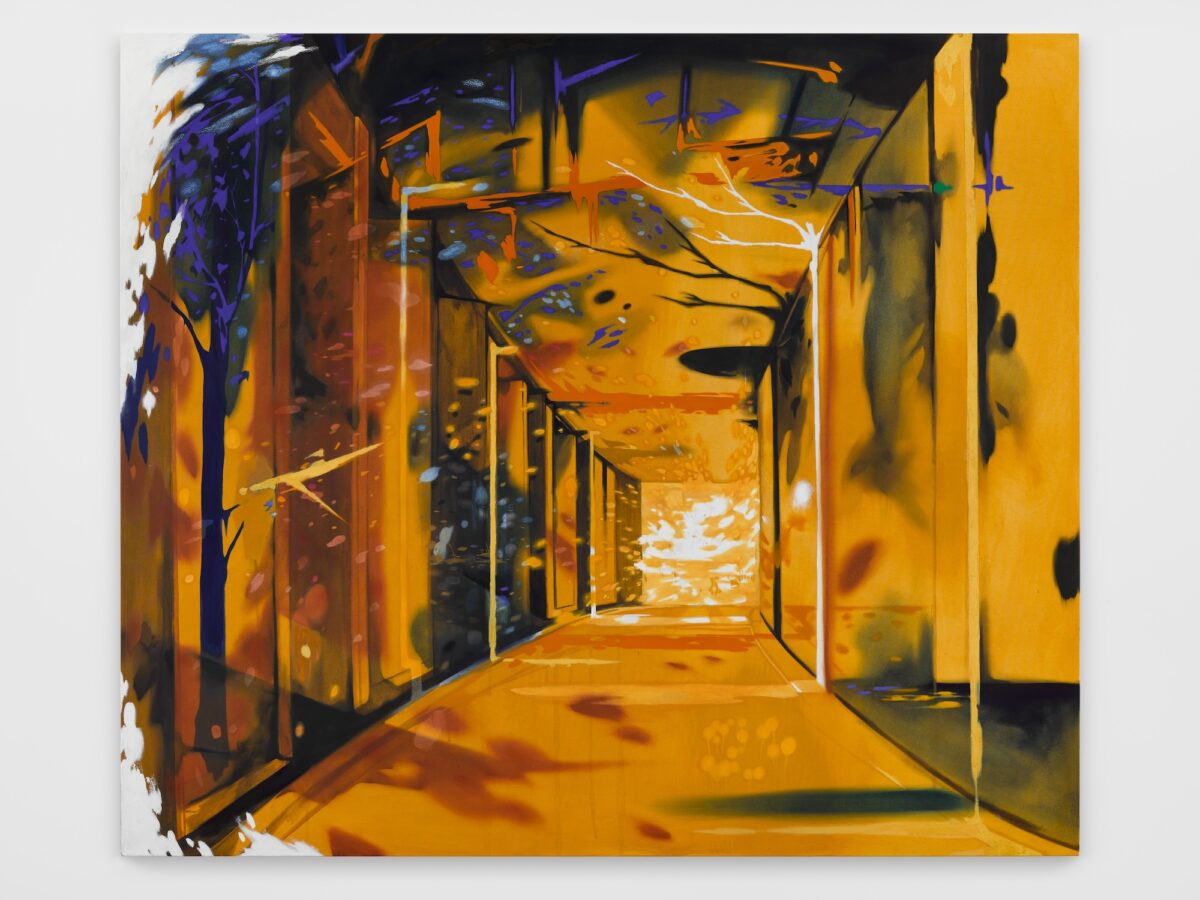
Hettie Inniss, Rememories from the Floating World– 20th July 2024 GRIMM Gallery
